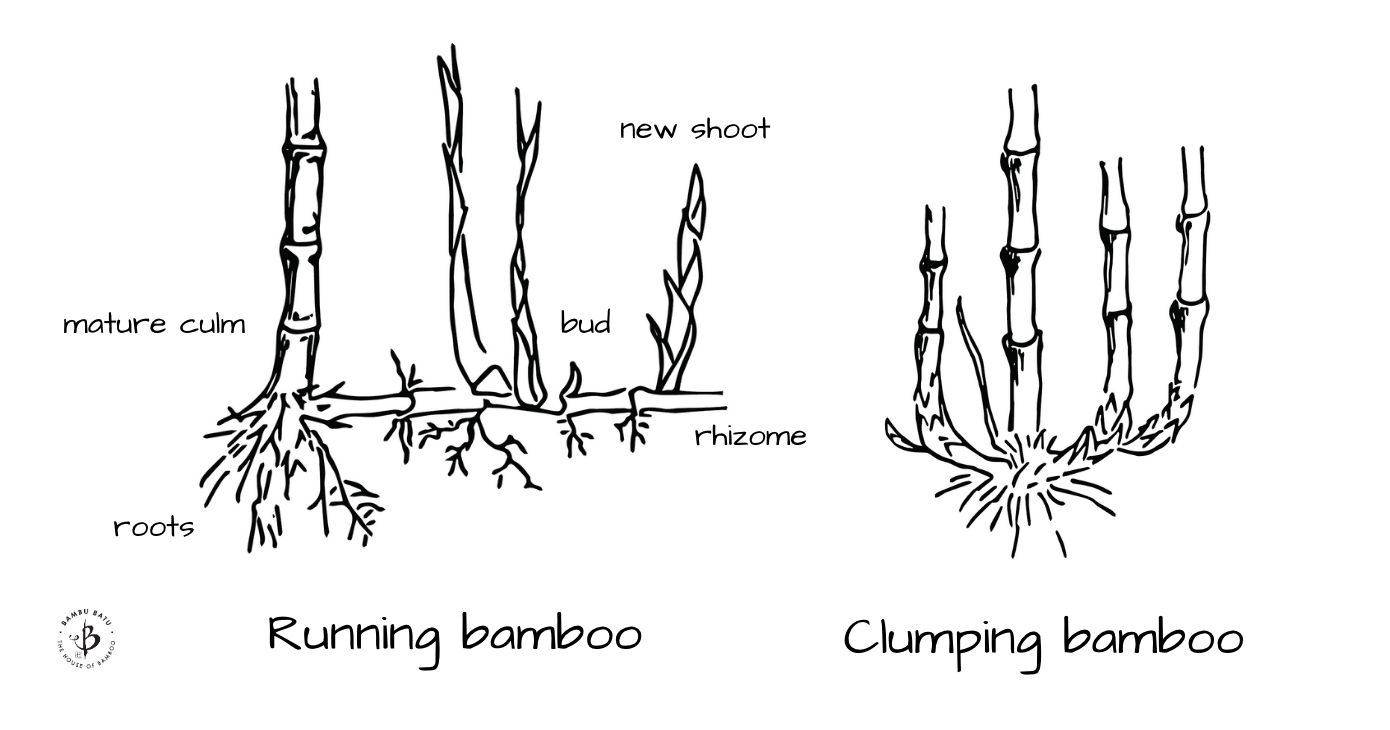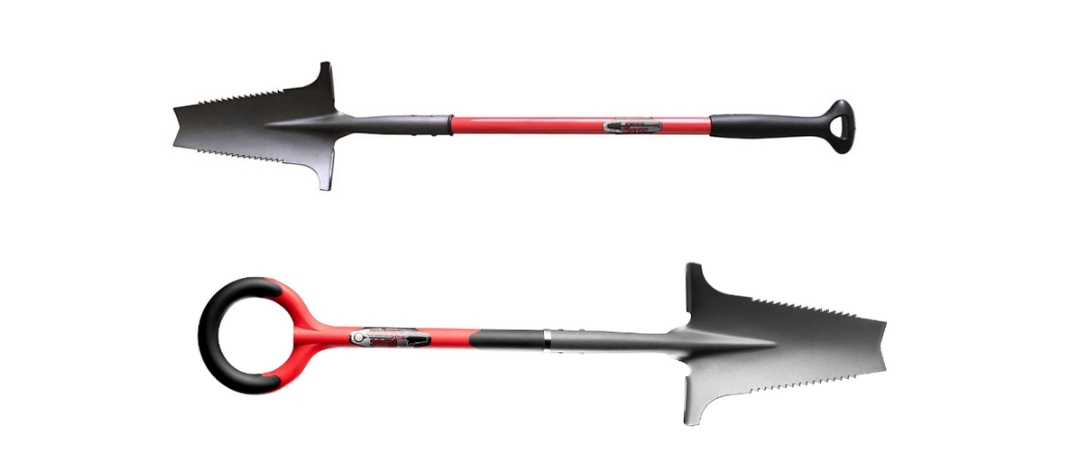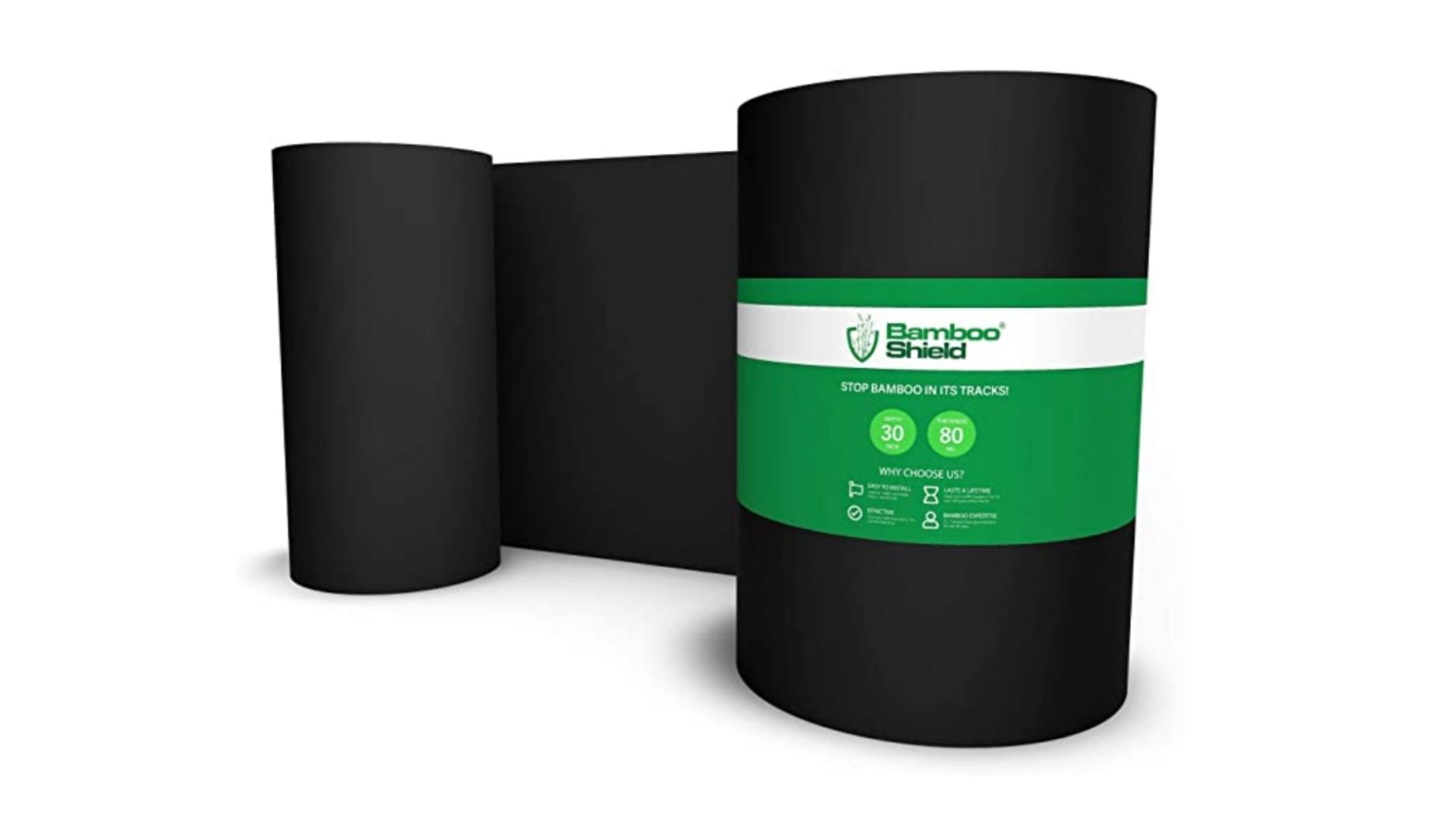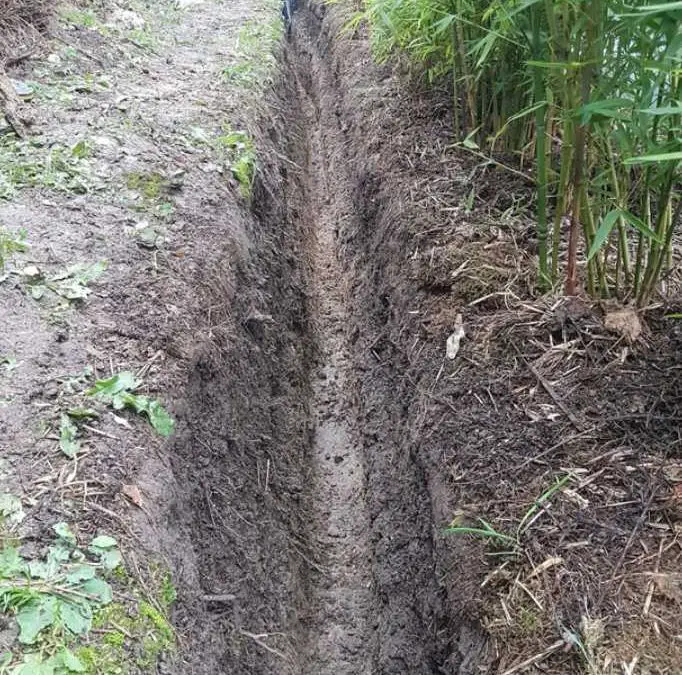When it comes to growing bamboo, one of the chief concerns is about how to contain or control it. Bamboo has a reputation for being unusually fast-spreading and difficult to remove. In fact, this is only true for certain species of bamboo. But if you plant a type of running bamboo, it’s important to take some precautions.
One of the easiest ways to control the roots of an aggressive bamboo plant is to dig a trench around the area where you want to contain it. An effective bamboo trench will be about 12 inches (30 cm) deep and 12 inches wide. This trench makes it easy to monitor the rhizome growth of the plant. For best results, you should check on the trench about twice a year, during the growing season. Spreading rhizomes can be easily pruned when they reach the trench.
DISCLOSURE: To make shopping easier, this article includes a few affiliate links. That means we may earn a small commission, at no added cost to you, if you click through and make a purchase.
Containing bamboo: Runners and clumpers
Not all bamboo is aggressive. We like to divide the 1,400 species of bamboo into two categories. Running bamboo has rhizome roots that grow parallel to the ground, horizontally, stretching ever outward. Usually, these kinds of bamboo will build a complex network of roots and rhizomes underground before they start to send shoots upwards.
In other words, by the time you see the fresh shoots come up, you might already have a serious problem on your hands.

The other kinds of bamboo we call clumping. Many gardeners much prefer to plant clumping bamboo so that they don’t have to worry about any containment issues. As shown in the diagram above, the clumping rhizomes grow in a U-shape, always bending upward. In this way, the shoots keep pretty close together.
These clumping varieties, sometimes called tropical bamboo, tend to do better in warmer climates. But there are a few genera of cold-hardy clumping bamboo as well.
Clumping bamboo is lower maintenance, for obvious reasons. But running bamboo is usually more cold-hardy, and may have other desirable characteristics, depending on the species. So there can be good reasons for planting a running bamboo. But containment is critical.
Bamboo containment methods
Unless you have unlimited area for your plants, running bamboo should always be contained. And there are a few different ways to do that.
- Plant a rhizome barrier around your bamboo
- Keep your bamboo in a pot or a barrel
- Dig a trench around the perimeter
- Prune the roots on very regular basis (most easily done when you have a trench)
How to dig and maintain a bamboo trench
For best results, a bamboo trench should be about 1 foot deep and one foot wide. Bamboo is a grass, and the roots are relatively shallow. A one-foot trench will give you enough space to see to the bottom of the roots. And the width will give you enough room to get your hands in there to prune the rhizomes when you see them grow into the trench space.
The trench should run around the whole perimeter of the plant, or the area which you want the bamboo to fill. You can dig the trench by hand with a good shovel or spade. Or you can use a motorized digger. Of course, the larger the bamboo grove, the more incentive you have to invest in a power tool.
Tools for the job
As with any construction or landscaping task, it’s all about having the right tool for the job. Luckily, there are a few tools that are perfectly suited for digging around your bamboo.

Root Slayer makes two shovels that work perfectly for digging trenches and cutting through those pesky bamboo roots and rhizomes. Take a look at the Root Slayer Shovel with the round handle for pushing and pulling and the Root Slayer Nomad both have 31″-long, steel handles.
The round-handled Shovel has a slightly wider blade, at 13″ compared to the Nomad’s 9″. The blades are made from carbon steel with serrated edges for sawing. They are both available from Amazon. This Trenching Shovel, with a longer handle and narrow 4″ blade, also works very nicely.
Check out more useful supplies in our list of bamboo garden tools.
Managing the trench
Depending on the location of the trench, you can either leave it open or fill it with something light. An open trench will be much easier to observe and watch for rhizomes. But it could also be a tripping hazard.
Usually, it’s best to fill the trench with sand, straw or mulch. This material is easy to remove in order to inspect the rhizome activity periodically.
You’ll want to get into the trench about twice a year to examine the rhizome growth and cut back the spreaders. It’s best to this twice during the growing season. In most cases, that will be in early summer and again in early fall.
After a few seasons, you’ll notice that most of the rhizome activity is usually concentrated in the same specific places. You can pay extra close attention to those areas and monitor them more regularly.
Combine a bamboo trench with a rhizome barrier
Another strategy is to bury a rhizome barrier on one side of the bamboo grove, and dig a trench on the other side. This is called an open-sided barrier.

One advantage is that the roots aren’t confined on all sides, which can create the risk of getting root-bound. And sometimes there are parts of the garden that are not accessible. It doesn’t make sense to dig a trench there if you can’t reach it.
Concrete in your bamboo trench
Some gardeners prefer to fill their trenches with something more impervious, like concrete. This is basically an alternative type of rhizome barrier. But if you plan to do this, the trench will need to be at least twice as deep. When the rhizomes hit the barrier, they will keep going, looking for a way around. Depending on the soil and the bamboo species, a barrier should be 24 to 36 inches (60-90 cm).
Pros and cons of trenches for bamboo containment
A bamboo trench is one of the best ways to contain your running bamboo rhizomes. The main advantage over a rhizome barrier is that you’re pruning the roots instead of just blocking them.
By blocking the rhizomes with a barrier, the rhizomes just head in another direction. Eventually this can cause the roots to get all twisted up on top of each other. In other words, the plant gets root-bound. This can often be fatal.
Moreover, a rhizome barrier needs to be buried at least twice as deep as a trench. When the roots hit the trench, you can just clip them off. But when they hit a barrier, they will often turn downwards and try to crawl under it.
The only real downside to a bamboo trench is that you might find it unsightly to have a ditch running along the perimeter of your bamboo grove. Someone might also step into it and trip. However, it’s unlikely for someone to be walking or running that close to the bamboo. Furthermore, it’s pretty easy to cover the trench or fill it with something light and inconspicuous like mulch dried leaves.
Read more
If you enjoyed reading about how to dig and maintain a bamboo trench to manage your grove, please consider sharing or subscribing to the blog. You might also check out these other in-depth articles.
- How to kill bamboo with gas and bleach
- What to do when bamboo leaves turn yellow
- Fertilizing your bamboo
- Watering your bamboo
FEATURED PHOTO: A well-dug trench around a grove of running bamboo (Phyllostachys). Photo by Vince Del.

























